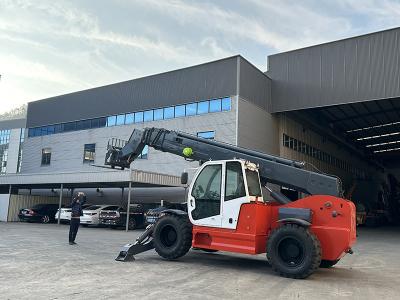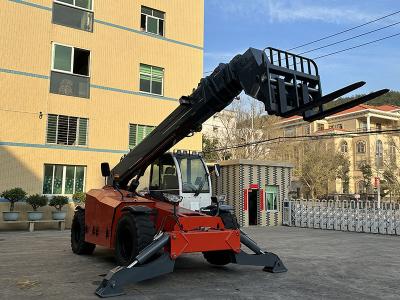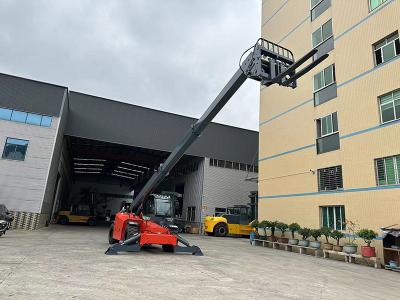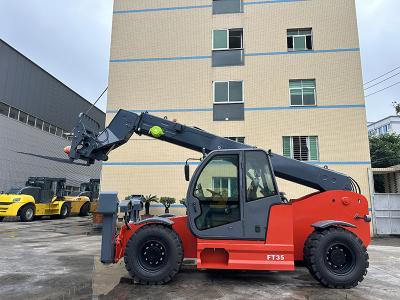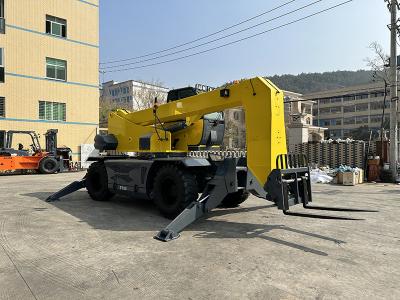A diminuição na conversão de torque e na pressão de mudança de velocidade da carregadeira de rodas compacta fará com que a carregadeira funcione fracamente. Para eliminar tais falhas, deve-se prestar atenção se o rolamento de agulhas do conjunto da bomba está anormalmente desgastado, se o elemento filtrante fixado na carcaça da transmissão está sujo, causando o bloqueio do elemento filtrante, e se a pressão de alimentação de óleo é insuficiente.
1. Queda de pressão do sistema
A pressão normal de trabalho do sistema de conversão de torque e mudança de velocidade da carregadeira FL460 está entre 1,0 e 1,6 MPa. Quando a pressão cai abaixo de 1,0 MPa, a carregadeira funcionará fracamente e terá dificuldade para caminhar.
As principais causas de tais falhas são as seguintes:
(1) O óleo de transmissão hidráulica do conversor de torque da carregadeira não é abastecido de acordo com as instruções, mas óleo de transmissão hidráulica não qualificado é adicionado à vontade.
(2) O elemento filtrante fixado na carcaça da transmissão está sujo, fazendo com que o elemento filtrante fique bloqueado e a pressão de alimentação do óleo seja insuficiente.
(3) As partículas de ferro produzidas pelo desgaste anormal do mancal de impulso e do anel de impulso do conversor de torque do carregador hidráulico fazem com que a válvula de distribuição no conjunto da válvula fique presa, causando refluxo interno do óleo.
(4) A haste da válvula de distribuição do conjunto da válvula está desgastada, causando alívio de pressão interna.
(5) As partículas de ferro produzidas pelo desgaste anormal do rolamento de esferas e do rolamento axial no conjunto de engrenagens fazem com que a válvula de distribuição emperre e faça com que o óleo interno flua de volta.
(6) O rolamento de agulhas do conjunto da bomba está anormalmente desgastado, fazendo com que a engrenagem acionada tenha um leve deslocamento longitudinal durante a operação e o volume de fornecimento de óleo mude.
(7) A superfície de contato entre o corpo da bomba, a tampa da bomba e as engrenagens principal e acionada no conjunto da bomba está desgastada e o óleo da cavidade interna é liberado.
Os seguintes pontos devem ser observados para eliminar tais falhas:
(1) O óleo de transmissão hidráulica qualificado deve ser substituído de acordo com as instruções e a tempo.
(2) O elemento filtrante fixado na carcaça da transmissão deve ser mantido ou substituído dentro do cronograma.
(3) O conversor de torque da carregadeira deve ser desmontado e inspecionado regularmente, e o rolamento de impulso e o anel de impulso devem ser substituídos a tempo.
(4) A haste da válvula do conjunto da válvula pode ser tratada com tecnologia de pulverização. A desvantagem é que a vida útil é muito curta e o conjunto da válvula também pode ser substituído.
(5) Os rolamentos de agulhas e rolamentos axiais do conjunto de engrenagens devem ser desmontados e inspecionados regularmente. Recomenda-se substituir os rolamentos dentro de um ciclo de revisão. Se forem usadas à força, as engrenagens podem ficar anormalmente desgastadas ou quebradas, causando maiores perdas econômicas.
(6) Os rolamentos de agulha do conjunto da bomba devem ser substituídos a tempo após desgaste anormal. Como é difícil adquirir este acessório individualmente, o conjunto geralmente é substituído.
(7) As superfícies de contato do corpo da bomba, da tampa da bomba e das engrenagens principal e acionada do conjunto da bomba são geralmente reparadas por retificação após desgaste, e a quantidade de retificação não é superior a 0,5 mm.
2. Superaquecimento do óleo
O deslizamento da embreagem nas marchas â , â¡ e ré é a principal causa do superaquecimento do óleo. Em casos graves, a carcaça fica quente e o óleo espirra pela porta de reabastecimento do conversor de torque da carregadeira.
As razões para a alta temperatura do óleo no conversor de torque e na transmissão são as seguintes:
(1) A placa de fricção está excessivamente desgastada, a ranhura do óleo lubrificante da superfície torna-se mais rasa e o efeito de dissipação de calor é reduzido devido à redução na quantidade de óleo que passa.
(2) A qualidade das placas de fricção domésticas não é qualificada, resultando em desgaste prematuro e superaquecimento da temperatura do óleo.
(3) Ao montar a embreagem, as placas de fricção e as placas de aço devem ser montadas estritamente de acordo com o número especificado. Se uma placa de fricção ou uma placa de aço for instalada menos para facilitar a montagem ou para reduzir custos, embora ainda possa ser usada temporariamente, poderá causar o aumento da temperatura do óleo.
Os seguintes pontos devem ser observados ao eliminar tais falhas:
(1) Ao desmontar e inspecionar, a profundidade de desgaste da ranhura de óleo da placa de fricção não pode ser superior a 0,1 mm; o desnível de empenamento da chapa de aço não pode ser superior a 1mm. Se exceder o limite de reparo, deverá ser substituído a tempo.
(2) Embora a substituição da placa de fricção importada original seja cara, ela pode garantir que ela atenda aos requisitos técnicos de funcionamento da máquina original.
(3) Monte as placas de fricção e placas de aço de acordo com o número exigido pela máquina original.
3. Vazamento na conexão da tampa frontal do conversor de torque da carregadeira
As principais razões para vazamento de óleo na conexão entre a tampa frontal do conversor de torque da carregadeira hidráulica e a carcaça da tampa frontal da transmissão são: o O-ring é danificado durante a montagem; os parafusos de conexão estão soltos; a qualidade do O-ring não é qualificada.
Como é complicado lidar com esse vazamento, é recomendável instalar um O-ring importado.
4. Dificuldade em mudar de marcha
A carregadeira FL460 não consegue mudar de marcha, o que geralmente é causado pela mudança no deslocamento lateral entre a válvula de distribuição e o tirante. A razão específica é principalmente o desgaste da cabeça esférica do tirante ou o afrouxamento da tampa da trava de ajuste. Se a falha acima ocorrer, o tirante de ajuste deve ser verificado e ajustado.















